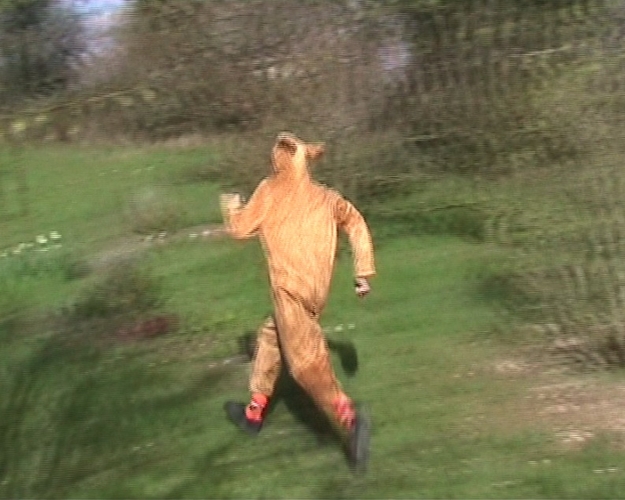Ida explained that she goes for a run every single day without fail. After running the same route five times, she decides to walk it again, this time moving at a slower pace and equipped with her phone in order to take photos. Throughout the route, she takes fifty photographs after timed intervals, which will later form the basis of one drawing in which lines from all photographs are overlayed. Of course, it is not possible to include the details of all 50 photos in one drawing, but still the resulting artworks feel very dense and multidimensional. By documenting her own trails in a systematic way, the artist creates a space for others to move in.
Another artist present suggested that Ida's drawings could be a way for her to visualise all the stimuli she experiences during her runs in an analogue manner. Ida agreed and added that, even when a route is objectively speaking quite boring, there are still a lot of things happening and stimuli to take in. She wonders what happens to all these impressions, and where they stay after the run is over. This is what she wants to express in her drawings.
After the presentation, the discussion moved to the theme of self-perception, and how the external situation you are in can affect it. The artist recalled her own upbringing in a family in which everyone was “strange“ in one way or another, though without official diagnoses of their neurodiversity. Her own strangeness, she remembered, never came to her attention until she grew up and started school. Another artist agreed, reflecting on how external factors ultimately have a strong influence on our own self-perception. She shared that, while she never consciously faced difficulties due to her autism before, she started to have more issues after graduating from the art academy, which finally led her to pursue an official autism diagnosis. As the discussion progressed, the up-and downsides of an official diagnosis with regards to self-perception were addressed. On the one hand, an official diagnosis can increase your awareness of how your behaviour can affect others, and help to identify where to set boundaries. On the other hand, it can also lead you to examine many aspects of your behaviour, for example social cues and eye contact, with new scrutiny, which can also lead to a lot of insecurity.
Other artists present agreed that life while studying at an art academy is very different from life onwards. In the academy, it is accepted and even encouraged to act a little strangely, and to think in ways that differ from the so-called norm. Afterwards, however, artists are expected to fit into a society that demands networking and marketing skills, and in which it is very difficult to make a living from creating art. In these new situations, neurodiverse artists might suddenly feel confronted with their own differences.
In this way, the discussion arrived at the question of what inclusion for neurodiverse artists does or should entail. Is it better to try and fit into a system that is built around neurotypical people, or better to build separate structures for neurodiverse people? To apply this more specifically to the art world: is it better for autistic artists to go through the same application process for subsidies as other artists, or for there to be separate funds for neurodiverse artists? Or maybe there is another way altogether, in which funds and organisations can learn from neurodiverse artists to make their processes more pleasant for everybody. How to achieve this, of course, remains an unresolved question.
Several of the artists present shared their own experiences about struggling to integrate two different versions of themselves – the one celebrated for their 'out of the box' thinking and art, and the other stigmatised for their condition and their need for therapy and additional healthcare. Perhaps true inclusion, whichever way that will look in practice, would allow autistic artists to embrace both of these sides of themselves without feeling like they have to play pre-defined roles.
